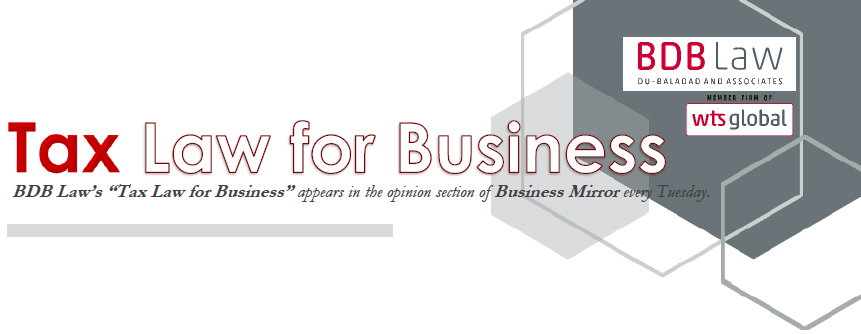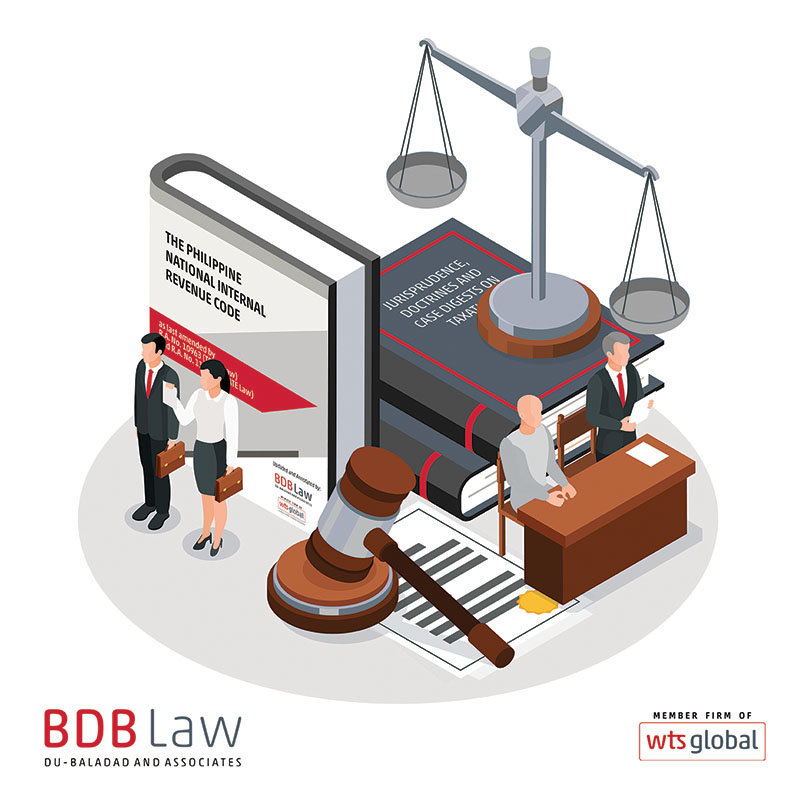Atty. Fulvio D. Dawilan discusses parameters of which prescriptive period is applicable for the collection of tax assessments as provided in the Philippine Tax Code and applied in court decisions.

Period to Collect Deficiency Tax Assessments
By Atty. Fulvio D. Dawilan
"Whether the 3-year or 5-year prescriptive period applies, the other important information is when to start the counting of the three 3-year or 5-year period. This is not clear in the Tax Code. Jurisprudence, however, clarified that the period should begin to run from the date the assessment notice is released, mailed or sent to the taxpayer. This means that in determining whether the 3-year or 5-year period has lapsed or not, the same should be counted from the issuance of the assessment notice, which is normally understood as the issuance of the formal assessment notice, final assessment notice or formal letter of demand."
We had previously written in this column about the efforts of the tax bureau in enforcing the collection of taxes. We had also discussed some of the limitations on the part of the tax authority as well as the remedies that the taxpayers may invoke when the enforcement action is not properly done.
This time, let’s talk about the limitation on the period allowed to the Bureau of Internal Revenue (BIR) to enforce collection of taxes. The observance of this period is important to both the taxpayer and the BIR, as its non-observance may result in the lose of authority on the part of the BIR to collect. Also, the enforcement beyond the allowed period provides the taxpayer an opportunity to be freed from its obligation even if a deficiency tax is properly assessed.
 I consider these three factors in determining whether or not a collection effort is properly pursued: (1) the applicable prescriptive period, (2) the reckoning of the prescriptive period and (3) the actions undertaken by the BIR for a collection to be considered initiated.
I consider these three factors in determining whether or not a collection effort is properly pursued: (1) the applicable prescriptive period, (2) the reckoning of the prescriptive period and (3) the actions undertaken by the BIR for a collection to be considered initiated.
In so far as the number of years allowed for the collection of taxes is concerned, our National Internal Revenue Code mentions two important periods associated to the collection of taxes – the three-year period and the five-year period. Which one is applicable?
Even the Tax Court had been of the view that the five-year prescriptive period applies for the collection of tax assessments. Accordingly, when an assessment is issued, the BIR has a period of five years to initiate the collection. In a number of cases, however, the Supreme Court declared that the BIR has a period of three years within which to collect the taxes assessed.
This was further clarified in the recent decision of the Supreme Court in G.R. No. 258947, March 29, 2022. In this case, the Court noted that when an assessment is issued within the 3-year ordinary prescriptive period to assess, the BIR has another 3 years to initiate the collection of taxes. The 5-year period for collection of taxes only applies to assessments issued within the extraordinary period of 10 years in cases of false or fraudulent return or failure to file a return.
Clearly, from this declaration, the BIR has only a period of three years within which to initiate the collection of tax assessments. This applies in case the assessment is not anchored on fraud or on failure to file tax return on the part of the taxpayer. Any collection efforts made beyond the said period should be considered barred and the taxpayer may invoke prescription. On the other hand, if there is a finding of fraud or failure to file tax return, and an assessment is made, the BIR has a period of 5 years to enforce collection.
Whether the 3-year or 5-year prescriptive period applies, the other important information is when to start the counting of the three 3-year or 5-year period. This is not clear in the Tax Code. Jurisprudence, however, clarified that the period should begin to run from the date the assessment notice is released, mailed or sent to the taxpayer. This means that in determining whether the 3-year or 5-year period has lapsed or not, the same should be counted from the issuance of the assessment notice, which is normally understood as the issuance of the formal assessment notice, final assessment notice or formal letter of demand.
Now, what action is required from the BIR for it to be considered to have initiated collection efforts? The Tax Code mentions two remedies for the collection of delinquent taxes – the distraint of personal properties or levy upon real property and initiation of civil or criminal action. Either of these remedies or both simultaneously may be pursued by the tax authorities. These remedies are further explained in Court decisions as summarized in G.R. No. 258947. The distraint and levy proceedings are validly begun or commenced by the issuance of a warrant or distraint and levy and service to the taxpayer. On the other hand, a judicial action for the collection of a tax is initiated: (a) by the filing of a complaint with the court or (b) where the assessment is appealed to the Tax Court, by filing an answer to the taxpayer’s petition for review wherein payment of the tax is prayed for. Any of these actions chosen by the tax authorities should be done within the 3-year or 5-year period. Otherwise, the right of the BIR to collect taxes shall be considered time-barred.
Note that when an assessment is elevated by the taxpayer to the Tax Court, it is not the BIR which is initiating the court proceeding. Enforcement action for the collection of assessed taxes will not be considered to have been initiated by the tax authorities. However, an answer to the petition with the prayer for the payment of tax shall be deemed to be an initiation of a collection action. The filing of answer should, therefore, also be made within the 3-year or 5-year period. Otherwise, the taxpayer may invoke the lapse of the BIR’s right to collect.
To summarize, a tax due, made through a valid assessment, may also be validly collected, if the collection effort (initiation of distraint, levy, or court proceeding) is done within three years (five years if there is a finding of fraud or failure to file tax return) from the date of issuance of the assessment notice (formal assessment notice, final assessment notice or formal letter of demand). If there is lapse in these periods, the taxpayer may rightfully invoke prescription.
The author is the Managing Partner of Du-Baladad and Associates Law Offices (BDB Law), a member-firm of WTS Global.
The article is for general information only and is not intended, nor should be construed as a substitute for tax, legal or financial advice on any specific matter. Applicability of this article to any actual or particular tax or legal issue should be supported therefore by a professional study or advice. If you have any comments or questions concerning the article, you may e-mail the author at This email address is being protected from spambots. You need JavaScript enabled to view it. or call 8403-2001 loc 310.



